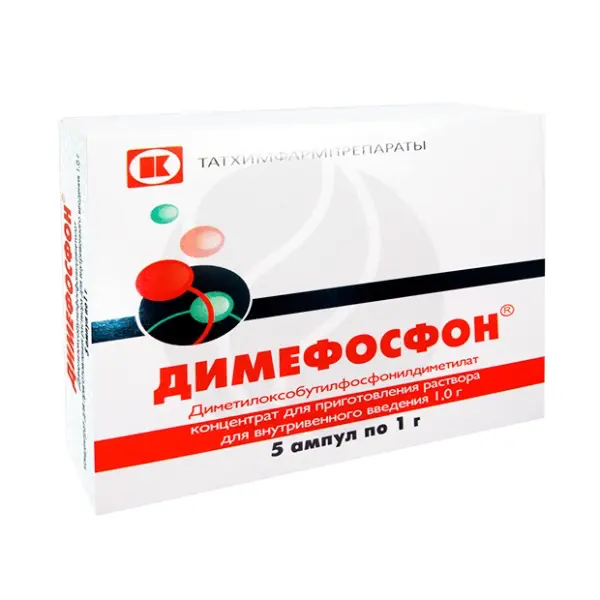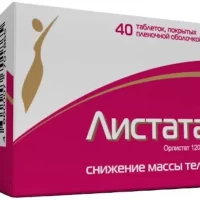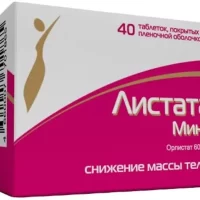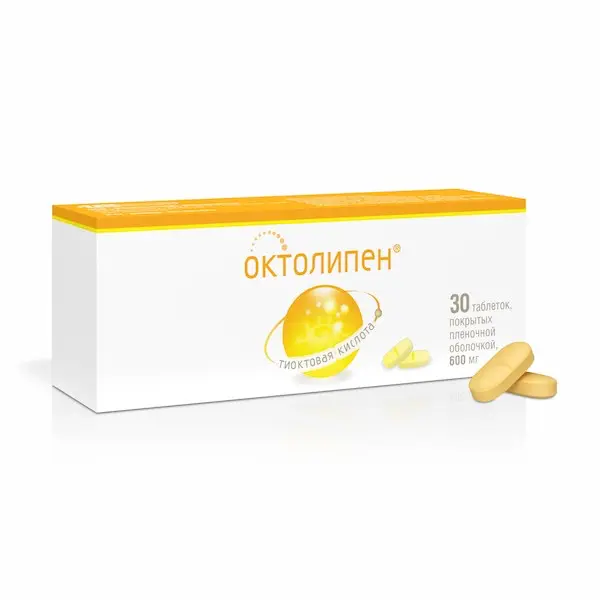Description
Dimefosfon Pharmacodynamics
Dimefosfon shows antiacidotic, membrane stabilizing, anti-inflammatory and antioxidant properties, normalizes blood flow and metabolism of brain tissue, reduces heart and lung failure, improves the regulation of blood circulation, including the brain.
Antiacidotic effect is realized through the intensification of renal and pulmonary mechanisms of regulation of acid-base status, increasing intraorganic blood flow and tissue metabolism, as well as dimefosfon reduces lactic and pyruvic acids in brain tissue.
Dimefosfon stabilizes cell membranes, restoring the reactivity of cerebral vessels, improving the function of the large hemispheres and brain stem, reduces the depth of impairment of consciousness, restores the sleep-wake cycle, reflexes whose arcs are closed through the stem sections, reduces the severity of pyramidal, cerebellar, vestibular, visual and auditory disorders.
Antioxidant effect is achieved by preventing the activation of lipid peroxidation and increasing the activity of antioxidant enzymes in the brain tissue.
Dimefosfon enhances energy processes in the brain both directly, affecting directly the mitochondria and indirectly by stimulating the pituitary-thyroid system, increasing tissue consumption of thyroid hormones, which is accompanied by activation of energy and catabolic processes in the mitochondria of cells. It exhibits properties of some neurotransmitters (GABA-positive, N-choline and dopaminergic activity).
Dimefosfon reduces cardiac and pulmonary insufficiency by restoring the resistance of peripheral vessels (arterial and venous).
Dimefosfon improves the regulation of cerebral circulation without a pronounced vasodilator effect, but has a positive effect on the metabolism of brain tissue during ischemia, improves venous outflow. The effectiveness of clinical use of the drug in various forms of cerebrovascular insufficiency is associated with its ability to increase resistance of nerve cells to ischemia, with reduction of edema and, therefore, improvement of microcirculation.
Indications
As part of the complex therapy:
Chronic disorders of cerebral circulation, in the intermediate and distant period of craniocerebral and neurosurgical injuries, consequences of ischemic and hemorrhagic strokes, Meniere’s disease.
Contraindications
Epilepsy, 2-3 degree chronic renal insufficiency (creatinine clearance less than 40 ml/min), individual intolerance, children under 18 years old.
With caution:
Pregnancy and lactation:
Strictly controlled clinical studies of safety of the drug Dimefosfon® during pregnancy and breast-feeding have not been conducted.
Currently, there is insufficient data on the use of Dimefosfon® concentrate for intravenous solution preparation during pregnancy to assess the teratogenic effect of Dimefosfon®.
With this in mind, Dimefosfon® concentrate for preparation of solution for intravenous administration should be administered during pregnancy and breastfeeding only if the expected benefits from its use exceed the potential risk to the fetus or the infant.
Animal studies have not shown any harmful effect on the embryo or its development.
How to use and dosages
- In the complex therapy:
- Chronic disorders of cerebral circulation, in the intermediate and distant period of craniocerebral and neurosurgical injuries:
intravenously by trickle – 1 g (1 ampoule) of the drug diluted in 10-20 ml of sterile water for injection or 0.9% sodium chloride solution 1-4 times a day for 10-14 days.
or intravenously drip – 1 g (1 ampoule) of the drug diluted in 200-400 ml of sterile water for injection or 0.9% sodium chloride solution 1-4 times a day for 10-14 days.
- Consequences of ischemic and hemorrhagic strokes:
intravenously by a stream – 1-2 g (1-2 ampoules) of the drug diluted in 10-20 ml of sterile water for injection or 0.9% sodium chloride solution 1-4 times a day for 10-15 days;
or intravenously drip – 1-2 g (1-2 ampoules) of the drug diluted in 200-400 ml of sterile water for injection or 0.9% sodium chloride solution 1-4 times a day for 10-15 days.
- Meniere’s disease:
intravenously – 1 g (1 ampoule) of the drug diluted in 10 ml of 0.9% sodium chloride solution 1-3 times a day for 10 days, then it is recommended to continue the course of treatment with the drug Dimefosfon®, solution for oral administration and external use, in accordance with the instructions for use.





